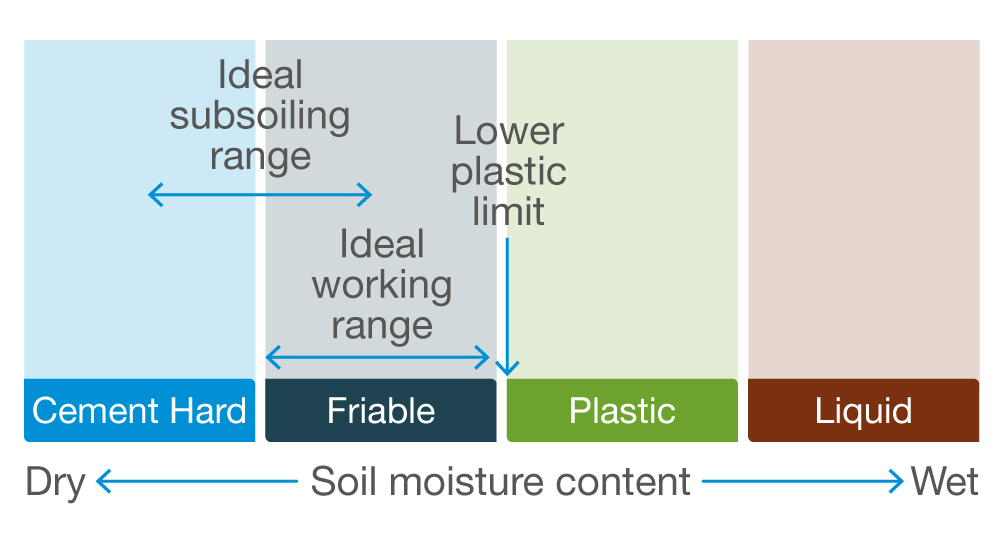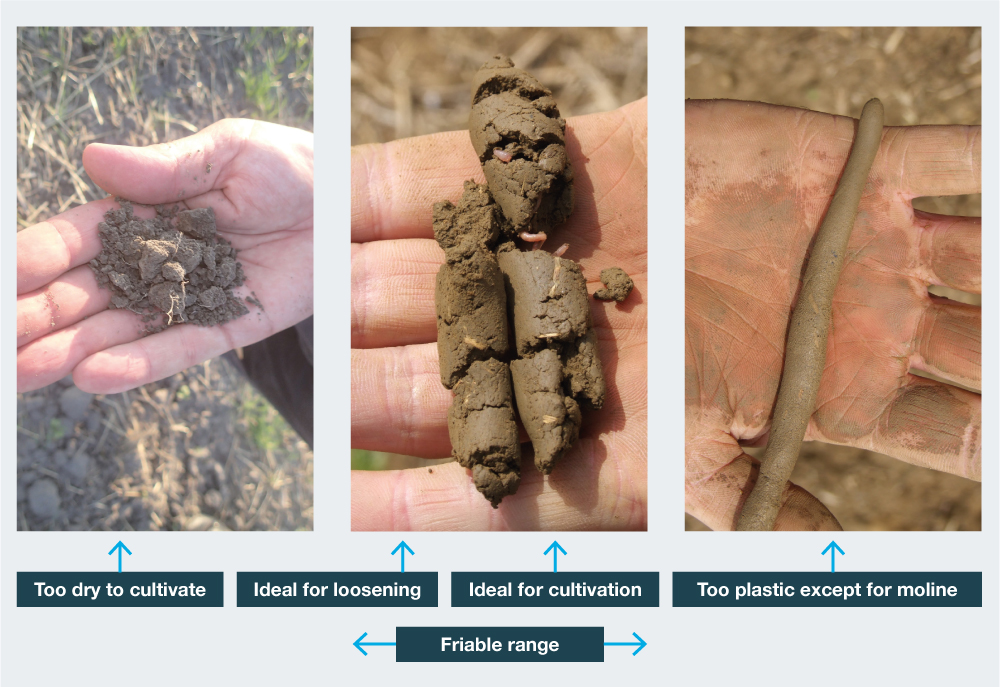- Home
- Knowledge library
- Assessing soil moisture for successful cultivation
Assessing soil moisture for successful cultivation
Soil moisture content should be assessed to ensure it is appropriate for cultivation. Use a ribbon test on a sample from the soil surface and at cultivation depth.
Soil workability
Soil workability changes markedly with moisture content.
Cultivating at the appropriate water content is essential for maintaining good soil structure, e.g. when forming beds.
The energy used for cultivation can be a good indicator of soil strength.
Fundamental moisture principles
When conditions are optimum for tillage, soils are friable. This is when the soil clods are most readily broken, and the conditions are ideal for creating a good tilth.
As soils get wetter, they become softer and more easily deformed.
Eventually, they can reach a condition known as the plastic state (i.e. acts like plasticine).
Graphic showing soil moisture content

Plastic state
If a handful of moist soil can mould into a ball or a cylinder, the soil is in the plastic state. In this state:
- Soil is highly sensitive to compaction by livestock, traffic and tillage
- Cultivation causes smearing and loss of structure, which destroys the all-important storage pores (spaces for storing readily available water)
As soil wets or dries, various soil layers can have markedly different moisture contents. This can lead to unintended compaction in the subsoil.
When any layer is close to or above (i.e. wetter than) its plastic limit, significant structural damage can occur.
Ribbon test
Critical moisture contents vary with soil texture, and this property is best determined by hand.
Fundamental moisture principles governing the interactions between soil and metal

Consider the following:
- Avoid working soil when plastic conditions are on the soil surface (to minimise traffic damage) and at cultivation depth (unless mole draining)
- Friable (crumbly) conditions are best for cultivations to break down clods into a seedbed
- Increased clod breakdown occurs when friable soil is firm or pressed
- Where soil is too dry to form a ribbon, clods do not tend to break down easily, and moisture is usually insufficient for germination
- Moisture between friable and dry is best for soil loosening, where brittle, tensile failure is needed to create cracks or fissures
When soil is above the lower plastic limit:
- Soil can be rolled/moulded into a ‘worm’ or ring without cracking/crumbling
- Soil aggregates are unable to reform after compression from machinery/cultivation (moisture and air is expelled), and so compaction/panning can result
- Avoid cultivating/travelling on soil to prevent compaction and poor crop development
Soil consistency
Consistency is the strength with which soil materials are held together. In clay soils, it increases with moisture content up to the plastic limit, then rapidly decreases as soils become saturated.
It is important to take account of moisture content and consistency (resistance of samples to deformation or breaking) throughout the soil profile.
Useful links
Read the Principles of soil management guide
Find out how moisture state is influenced by soil texture
If you would like to order a hard copy of Principles of soil management, please use our online order form or call 0247 799 0069.
Have a question? Ask a member of the team:


